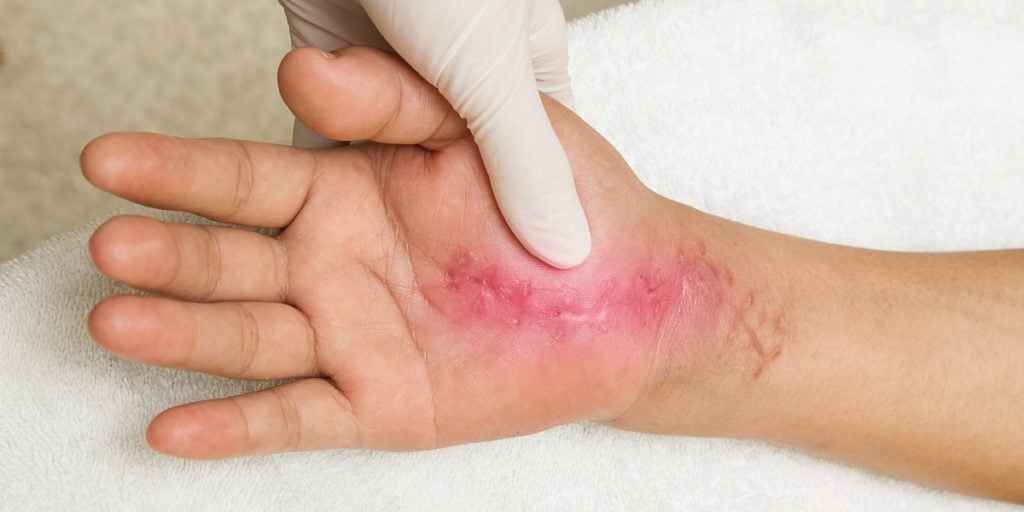The Phases of Tissue Healing & How Red Light Therapy Helps
When our bodies experience tissue damage through injury, illness, or other environmental factors, a healing process happens at the microscopic level. In this article, learn more about this process, including the different stages of tissue healing and how red light therapy (RLT) can supplement the healing process to speed it up and reduce pain.
What Happens During the Body’s Healing Process?
The healing process comprises regeneration and repair components. It includes four phases, which are as follows:
Step One: Hemostasis
During this survival stage, your body releases signals that tell your blood to clot and halt active bleeding. Your body makes a platelet and inflammatory cell clump that goes to the injured spot to cause the bleeding to subside. The platelets, which are parts of cells, bind to the injured tissue and support healing. They release substances that help create additional platelet function, which encourages clotting factors that generate a protein mesh to block blood flow at the injury. In addition, the platelets present release growth factor substances to promote healing further. Other cells come, more protein mesh forms, and collagen helps start tissue repair.
Step Two: Inflammation
This stage overlaps with the first and, if everything works correctly, should last for just a few days. It activates the complement system, the name for a group of signaling molecules found in the bloodstream. This system manages blood vessels in the area and tells inflammatory cells and white blood cells to come. Blood vessels flow better and encourage healing and cell-building — inflammation results, presenting as swelling, redness, pain, and warmth. The inflammation process helps remove harmful waste materials, promotes healing factors, and supplies components for rebuilding.
Step Three: Proliferation
This process involves the building of tissue. The inflammatory phase helped create a foundation for this tissue to form. This process creates new blood vessels, tissue granulation, and skin while reducing the size of the wound. Blood flow brings oxygen, collagen, stem cells, and other substances to help develop smooth skin or needed tissue, such as muscle, tendon, ligament, or bone.
Step Four: Remodeling
Remodeling can be a long, ongoing process depending on the situation. The body uses stronger collagen to replace weaker parts, organizes tissue that needs it, and so on. This process remodels and repairs to create a fully and properly healed area.
How Can Red Light Support Healing?
While the body goes through the standard four phases of healing after an injury, various factors can affect the length of time of the healing process. Some factors, such as age, may be out of your control, but you can take action to facilitate healing. For instance, physiotherapy encourages healing. Red light is another way you can support your body’s healing processes.
How does red light help? It promotes increased cellular energy by impacting the part of our cells called the mitochondria, which plays a key role in energy synthesis and transportation. The increased cellular energy and temporarily widened blood vessels created through red light therapy help the inflammatory process involved in healing. These effects bring the needed substances to the site faster, so they can start getting rid of waste and work on damaged tissue as soon as possible. RLT also increases collagen production, which is part of the repair process.
Professionals now question the use of ice immediately following an injury because it reduces the inflammation process necessary for healing. Red light therapy provides an alternative to ice by working with the inflammatory response to promote efficient healing.
Red Light Therapy Sessions
While you can target specific body parts with red light therapy, you can also encourage full-body responses by using a red light therapy bed. Full-body RLT helps increase cellular energy and natural healing throughout the whole body. Full-body therapy provides a painless method of healing that doesn’t require medication, injections, or surgery. Nonetheless, it’s also safe to use with other treatments and therapies for the best results in each situation.
Practitioners should customize red light therapy treatments to each person’s needs. RLT provides some immediate results, yet the results build with each session to provide ideal improvement after consistent use for about eight to 12 weeks. It’s good to begin with short 10-minute sessions every other day. In the second week, decrease if you notice symptoms like redness or tightness, or increase up to 20 minutes if everything is fine. Consult a photobiomodulation professional for personalized advice on the number of sessions, length of each session, length of RLT treatment plan, and wavelength settings recommended for your case. This professional can also offer information on what to expect from your full-body treatment session and how to prepare.

